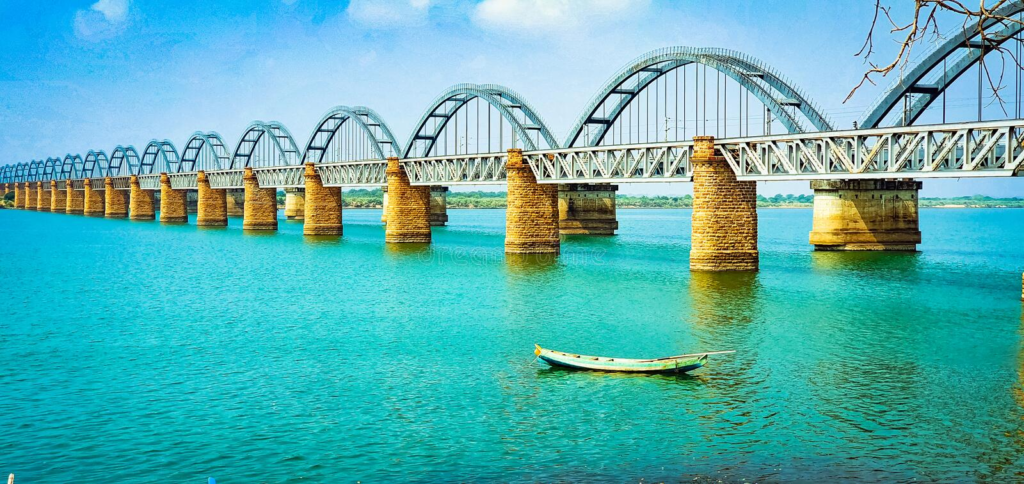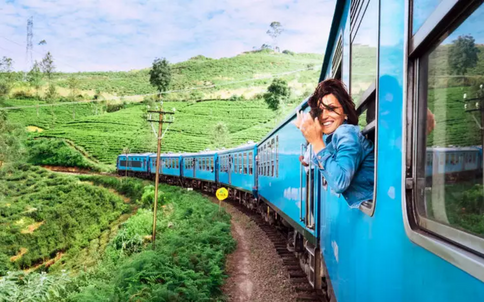Musings by Shekhar Nambiar
Train journeys across India have a romance of their own. In days of yore much of India travelled on trains in conditions far from comfortable, yet the thrill of long train travel was exciting and unparalleled experiences.
Also read: A Tale of a Song & Smoke
The best experiences were on trunk routes crisscrossing the country. The Howrah-Mumbai (then Bombay) route cutting through the heartland or the Madras-Delhi travel took over three days of travel in exceptionally hot and cold climatic conditions. The experience of travel on these routes needs to be lived to be believed and told.

Trunk routes
One of the earliest and longest journeys was from Mangalore to Peshawar over 2,500 miles, covering the distance in 96 hours – or four days – and passing through some 12 of the present-day Indian states and different climate zones. Of course, it was undivided India then with two coaches providing through connections via Madras. The GT (short for GT Express) plied between Madras Central (now PuratchiThalaivar Dr MG Ramachandran Central Railway Station) and Peshawar. I remember coaches being detached at Madras Central and then getting hitched to the longer and more arduous journey past peninsular India, across the central provinces and the heartland into the northern parts. Everything from food, attire and language changed as people traversed through regions.

To many, especially first-timers, it must have been a learning experience, almost life changing. Leaving their home towns and native villages for the very first time, it was nothing short of baptism by fire – homesick and sad at having to leave their near and dear ones behind. Perhaps the one thing that made them forget their heavy hearts was the excitement of the train journey that lay ahead.
Also read: A festival goes global
Major rail heads
The excitement and thrill as trains approach major rail heads and junctions, be it Delhi Main, Lucknow’s Charbagh, Nagpur, Vijayawada or Madras Central, Coimbatore, Shoranur – to name a few – knows no bounds. Each station has its own speciality on sale on the platforms – from sweetmeats, biryani to fruits, tender coconut water and flavoured milks.

The sight of Howrah railway station just across the cantilever bridge by the same name over Hooghly is mesmerizing. The red of its exterior is akin to the colour of the Madras Central and Delhi Main buildings. Howrah has 23 platforms and with a maze of tracks is among the busiest stations in the world. Rail lines go in different directions, connecting it to Chennai, Mumbai via Nagpur, Delhi and New Jalpaiguri. Not too distant is Belur Math, the headquarters of the Ramakrishna Mission, on Hooghly’s foreshore offering peaceful solitude by the swift flowing river away from the noisy city. The Howrah Bridge can be quite noisy and even in the quiet of the Math the honks keep ringing in the ears.

Breaking the jinx& memorable journeys
For a long time, passing by Itarsi junction, I often wondered if I’d ever get to take the line west, towards Mumbai. It took me almost 25 years to be able to travel westward from here, almost as if I got to extricate myself from the pull of the southerly direction towards Nagpur. Departing from Itarsi, it was exciting to take the sharp bend right by the steep hillside and into the tunnel to emerge triumphant on the other side, breaking the jinx of not being able to make the journey to Nasik and Mumbai.
Also read: Boom town, difficult roads
Personally, the Central Railway route to Mumbai from Itarsi is more exciting than the shorter Kota-Vadodra-Surat line. It has so much more to offer. Important stations, including Manmad, Nashik, Igatpuri and the Ghat section, and then Kalyan are all much more interesting to a traveller. Mumbai’s congestion and crowds are palpable as soon as the train reaches Kalyan. One by one the suburbs race by, letting you experience the throbbing city’s pulse. My first-time ever to Mumbai was from this route. And what an experience it was!

Nagpur, once the centre of undivided India geographically, operates under Central Railway. Historically too the Railway is important as it opened India’s first rail line – Bombay-Thane – in 1853. Nagpur is a busy junction with lines of the main trunk routes criss-crossing here in four directions.
Also read: Autumn of 1971
You know when Nagpur approaches as soon as you start seeing the orange trees a couple of hours from Amla, a quaint little station on the trunk route beyond Itarsi. Amla is also the base kitchen for food on certain trains that are quickly loaded on to the pantry car. It’s always a short halt but the deft handling by the catering staff makes sure that not a tray is left unloaded.

Crossing the majestic Narmada, Godavari and Krishna rivers are the most exciting parts on the journey to peninsular India. From the hot and semi-arid Telangana to the eye-pleasing green paddy fields of the river basins of Andhra, it is a sea change in topography. The bridge over the holy Godavari at Rajahmundry during and immediately after the monsoon is an experience in itself. And, as you catch the occasional glimpses of the Bay of Bengal beyond Gudur, the heart misses a beat.
Also read: Living next door to Gurugram
A fascinating natural mystery has always been Palakkad, or Pal-ghat. Here, a gap in the majestic Western Ghats offers a natural access to God’s Own Country through the wild elephant corridor! If you’re lucky you might as well see them forage for food tearing down bamboo thickets and tree branches. Almost immediately after leaving Palakkad, Kerala’s first city bordering Tamil Nadu, the tracks pass along the Nila, or Bharathapuzha river, for some distance. Strangely, it’s the only river in Kerala that seems to be perennially dry, exposing its naked sandy riverbed.

A rail journey that takes your breath away is the Kollam-Punalur-Shenkottai stretch across the Ghats, a drop from a height to the plain below. The earlier metre-gauge travel was somehow more exciting but it’s still worth doing a trip up and down. A somewhat similar experience- a wee bit less exciting – is crossing the Vindhyas and onto Hoshangabad on the plains below. The gushing waters of the Narmada, seemingly in hurry on its journey westward seeking the ocean, is indeed a sight.
Also read: Megacity Mumbai as I recall
A country on the move
Train journeys can be reminders of how much the country has changed, changes to the lay of the land, ecology and the environment. And changes in the way people dress, food habits and of development transforming regions, cities and towns, not necessarily always for the good.

Trains now ply between Jammu Tawi and Kanyakumari following the conversion of the line to broad gauge beyond Thiruvanthapuram. The Konkan Railway has added a new dimension by making travel quicker and more scenic as trains wind their way through green fields and forests, the spectacular Western Ghats ranges, and the ocean waves on one side.
Also read: Why oh why do I love Kochi!
As soon as the rail construction through the difficult Pir Panjal is complete, Srinagar would be within reach by train services from the rest of the country. The day is not far when Ladakh will be connected by rail. At 5400m, the Bilaspur-Lehrail line (and possibly onward to Srinagar) when complete, would be the highest in the world. Land acquisition work for the line in Himachal is believed to be picking up pace.

Railwaycuisine
Journeys from the past that I’d count as memorable would include the then Punjab Mail (now plying between Ferozepur Cantonment and Chhatrapati Shivaji Maharaj Terminus or Victoria Terminus) from Delhi to Bombay via Itarsi with one of the most delicious meals on Indian Railways – the continental style grilled chicken and vegetables. It was simply out of this world!
Yet another experience was the lovely breakfast of egg and toast at Mughalsarai (Pt. DeenDayal Upadhyaya Junction) and the railway mutton (lamb) curry at New Delhi station. The vadai and upma rustled up by Annapoorna at Madras Central on the level below the retiring rooms used to be super delicious. The poori-aloo-ki-sabzi continues to be served, particularly on north Indian railway platforms, to this day.

The overnight journey from Delhi on the prestigious Lucknow Mail was equally enjoyable but being almost entirely night travel, it did not offer much of a visual treat. Still, the then brand-new ICF coaches of the train connecting the national capital to the politically important state of UP (and the capital Lucknow) was well worth the travel. The spotlessly clean and immaculately maintained airconditioned and other coaches must have then been role models for trains running elsewhere in the country on other railway zones. The Grand Trunk Express must have been a close second. Those were days before the Rajdhani and Shatabdi Express trains.
Also read: Road to a carbon-free future
The sixties were the era before the vestibuled coaches. The GT Express had scheduled halts in the middle of nowhere for passengers to alight and walk to the Dining Car for meals. That was an experience of its own. The non-veg and vegetarian thali meals served on the GT, complete with papad, rasam and pickles, made an impact on many an impressionable mind.
Nowadays, on most railway stations, the big perceptible change is the missing red tunic of the once ubiquitous railway porter. Earlier a part of everyrail platform, they seem to be a vanishing tribe. During the old days, they would turn up from nowhere the moment a train arrived to carry heavy loads on their head. They were a sturdy breed very much likely to carry singlehanded an entire family’s load. What’s still a constant, though, is the sales pitch and loud calls of the railway vendors hawking food, snacks and beverages.
Tourist trail
The expensive heritage rail yatras traversing the country offer a different travel experience altogether as they go about exploring tourist sites. Not having been on any of those, I cannot recount or comment on the experience or adventure they offer. But if they rake in foreign exchange so much the better for Indian tourism.

Indian Railways also is a good way to see the country for backpackers and budget travellers. There’s scarcely a part of India that the railways don’t cover, more so now with the standardisation of gauge across the land.
No mention of tourist trains can be complete without mention of the legendary Orient Express that operated from 1883 up until 2002 originally running mainly between Paris and Istanbul. The train became synonymous with luxury and also of intrigue and mystery with Agatha Christie’s novel ‘Murder on the Orient Express’ that also became a popular film. The plot involvesdetective Hercule Poirot on the train investigating a murder and solving the mystery.

Heritage rail
Many narrow and metre-gauge stretches have been converted now to standard broad gauge. Some narrow-gauge stretches remain intact, including the Himalayan Railway from New Jalpaiguri to Darjeeling, and the Mettupalayam-Ooty Nilgiri Railway and the Kalka-Shimla lines – all three among the four railway UNESCO World Heritage Sites in India.
Alongside trains, the romance of locomotives – steam and diesel – cannot be ignored or forgotten. The National Rail Museum in Delhi takes people on a trip down memory lane. If you are a memorabilia collector, the Museum offers some collectibles on sale, or at least used to.
Renewed interest
There is a renewed interest in rail travel. The government’s modernisation drive augurs well for the railways. After all, the railways are the lifeline of the country and for the economy, carrying passenger and freight from the southern ports to the landlocked North and from industrial hubs to consumer centres, cities and towns. High speed freight corridors and superfast bullet trains are revolutionising transportation. Comfort and speed would help attract rail buffs and people who still retain an affinity for terrestrial travel.

Innovative changes have been introduced or are in the offing. These include the Vande Bharat trains, the most recent being between Chennai and Mysuru. History was created when, for the first time, IRCTC, the Railways’ subsidiary, allowed private sector participation on certain routes, including the Lucknow-New Delhi Tejas Express covering the 500 km distance in a little over six hours. Yet another initiative has been the Bharat Gaurav trains, a theme-based 10-12 days tourism packages by well-established private travel companies, as also the pilgrimage circuit trains that include Varanasi, Mathura and Puri among other centres.
The romance of rail travel will continue for a long, long time and more so as people become conscious about the environmental consequences and carbon footprints of transportation that are fossil fuel dependent. Trains hauled by electric locomotives offer a sustainable and environment-friendly solution to human and freight transportation.
Nobody gives you India like the Indian Railways!
Also read: Flying high, higher




